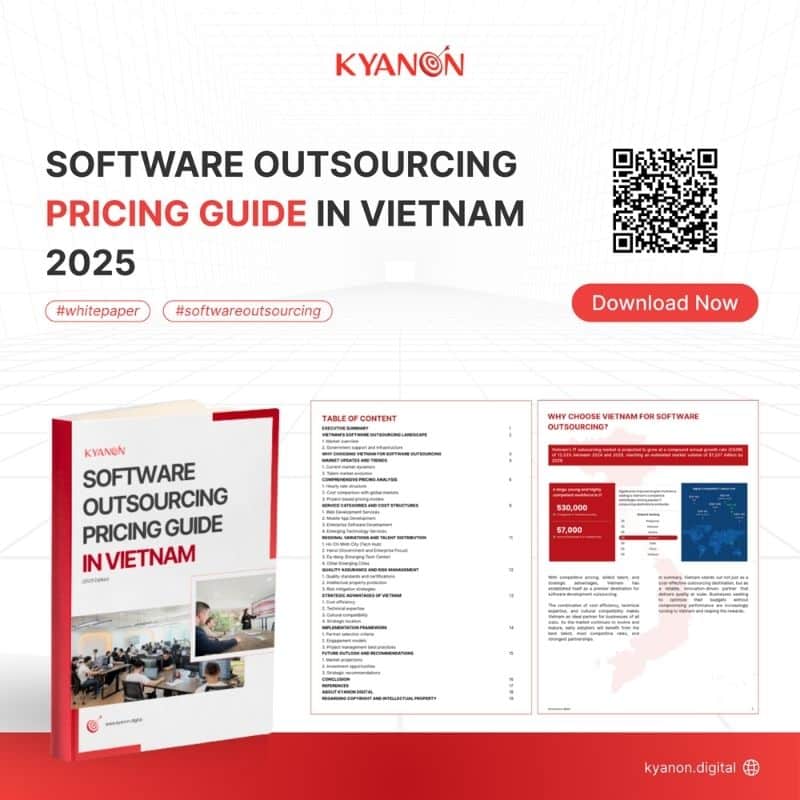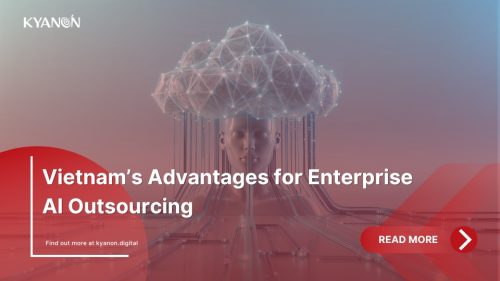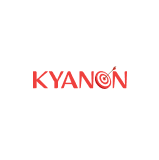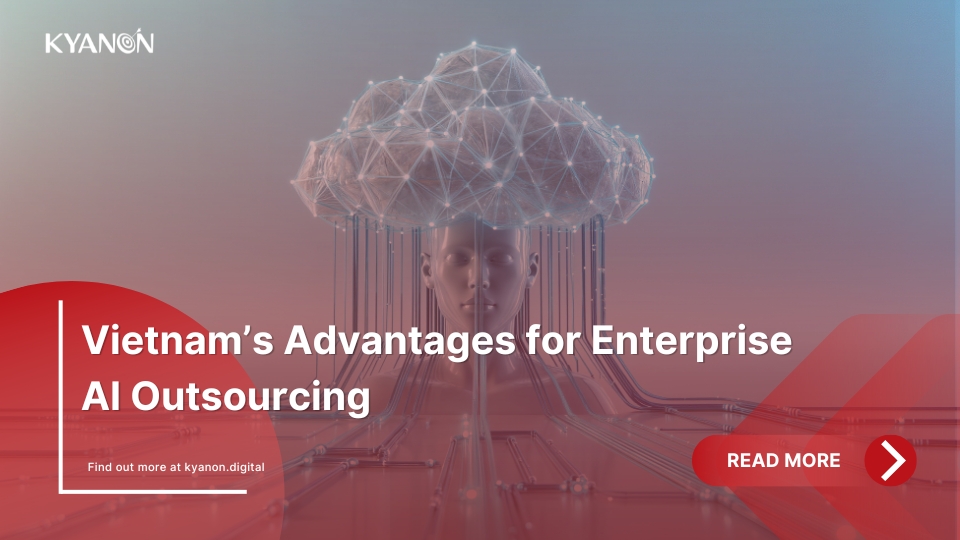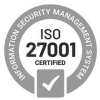Introduction
In today’s fast-paced digital landscape, mobile app development success hinges on selecting the right technology stack for mobile apps. The tech stack defines the foundation of an application, influencing its scalability, performance, cost-efficiency, and security.
A well-architected mobile app tech stack not only ensures smooth operation but also drives long-term business growth by optimizing development workflows and future-proofing the app against evolving user demands.
Why Do Tech Stack Decisions Matter for Business Growth?
Every choice in mobile app development—from selecting an iOS development framework to deciding between a Django backend for mobile apps—impacts a company’s ability to scale, maintain, and innovate. Businesses that make informed tech stack decisions benefit from:
- Optimized Total Cost of Ownership (TCO): A well-planned tech stack minimizes technical debt, reduces maintenance costs, and ensures long-term viability. Research by the Standish Group suggests that choosing the right technology can reduce application maintenance expenses by as much as 20-30% in the long run.
- Faster Time-to-Market & Development Efficiency: Leveraging an agile product development framework and modern tools like mobile web application development frameworks (e.g., Progressive Web Apps) accelerates development while maintaining flexibility. According to the Accelerate report, development teams using Agile methodologies have a 25% faster time to market compared to traditional methods.
- Scalability & Maintainability: Future expansion is easier with a structured, modular approach, whether through early years development frameworks or scalable backend solutions. Applications built with a microservices architecture scale approximately 40% better than monolithic applications, according to a study by O’Reilly.
Selecting the right technology stack is not just a technical decision—it’s a strategic investment. In the following sections, we will explore the core components of a mobile app tech stack, key considerations for making the right choice, and best practices to ensure long-term success.
Further Reading:
- Lean Tech Stack: Smart Scaling Without the Heavy Costs
- Custom Software Development for Startups—Designed for Success
What is the tech stack for mobile app development?
The tech stack is an umbrella term for the various tools and technologies used to develop mobile applications. It includes technologies used to build front-end, back-end, and development platforms. (Katalon)
Core components of a mobile app tech stack:
- Frontend: User interface and experience.
- Backend: Application logic, data processing, and integrations.
- Database: Storing and managing structured/unstructured data.
- Infrastructure & DevOps: Cloud hosting, CI/CD pipelines, and security measures.

Core Components of a Mobile App Technology Stack
Transform your ideas into reality with our services. Get started today!
Our team will contact you within 24 hours.
Core Components of a Mobile App Technology Stack
Selecting the right technology stack for mobile apps is essential for ensuring performance, scalability, and long-term maintainability. Let’s explore each component in detail, including market trends, pros and cons, and best practices.
According to Statista, JavaScript and HTML/CSS are the most commonly used programming languages among developers globally.

Most-used programming languages among developers worldwide as of 2024 (Statista)
1. Frontend (Client-Side) – The User Interface and Experience
Definition: The frontend of a mobile app is what users interact with directly. It includes UI design, animation, and interactive elements that shape the user experience.
There are many other JavaScript frameworks and libraries—such as Bootstrap, React, Angular, jQuery, and others. They provide additional functionalities and help front-end developers build engaging user interfaces.
Pros & Cons:
| Approach | Pros | Cons |
| Native Development (Swift for iOS, Kotlin for Android) | High performance, full access to device capabilities, best-in-class UX | Longer development cycles, higher costs |
| Cross-Platform Development (React Native, Flutter) | Faster development, cost-efficient, shared codebase | Potential performance trade-offs, limited access to some native features |
| Mobile Web Apps (PWAs) | Works across all devices, cost-effective, no app store approval required | Limited access to device features, performance not as strong as native |
Best Practices:
- Choose native development if performance and UX are the top priorities.
- Use React Native or Flutter if you need faster development with a single codebase.
- Leverage PWAs for content-heavy apps that don’t require deep device integration.
Case Study:
Airbnb initially adopted React Native for cross-platform development to streamline their mobile app deployment. However, as their app became more interactive and performance-intensive, they transitioned back to native development to achieve smoother animations and maintain a consistent 60 fps experience. This shift was driven by the need for a high-quality, seamless UX that could not be fully optimized with React Native at the time.

Airbnb mobile app development case study
2. Backend (Server-Side) – Application Logic & Data Processing
The backend is responsible for business logic, database management, authentication, and API integrations.
Market Trends:
- Django backend for mobile apps is growing in popularity due to its security and rapid development capabilities. According to the Django Developers Survey 2023, which included insights from over 4,000 developers, Django remains a popular choice among backend frameworks, with a significant portion of developers utilizing it for various projects. Specifically, the survey indicated that around 74% of developers use Django for full-stack development and 60% for API development, highlighting its versatility and widespread adoption in the industry.

The state of Django 2024 (Jetbrains)
- Serverless computing, powered by platforms like AWS Lambda and Firebase Functions, is becoming increasingly popular for building scalable and cost-efficient backends. Research suggests that adopting serverless architectures can lead to an average cost reduction of 10.2% while improving system performance by 43.6%. Additionally, the global serverless computing market is projected to grow at a CAGR of 27.9%, reaching $9.17 billion by 2023. (Cornell University, MoldStud)
- Meanwhile, microservices architecture continues to replace traditional monolithic structures, offering greater flexibility and operational efficiency. By leveraging strategies like blue/green deployments, companies can achieve zero downtime and enhance system availability. Moreover, microservices enable faster deployment cycles, reduced errors, and quicker bug fixes, allowing development teams to respond more efficiently to evolving customer needs. (OpsLevel)
Pros & Cons:
| Backend Type | Pros | Cons |
| Monolithic Architecture | Easier to develop and maintain initially | Scalability challenges, harder to update over time |
| Microservices Architecture | Scalable, modular, better fault isolation | More complex to develop and manage |
| FaaS (AWS Lambda, Firebase Functions) | Cost-efficient, auto-scaling, no server management | Limited control, vendor lock-in risks |
Best Practices:
- Use Django backend for mobile apps when security and rapid development are top priorities.
- Implement microservices for large-scale applications that need flexibility.
- Consider serverless for cost-effective, event-driven applications.
Case Study:
Instagram initially used Django for its backend due to its simplicity and scalability. As the platform grew, they introduced microservices to manage increasing user traffic. Instagram handles over 95 million photos and videos daily, demonstrating Django’s ability to handle high loads.

Instagram mobile app development case study

Response Times per Load with Gradual Ramp-up (MDPI)
3. Database – Storing and Managing Data
Databases store and retrieve app data, from user profiles to transaction histories.
Market Trends:
- Cloud databases (AWS DynamoDB, Google Firestore) are increasingly adopted for scalability. According to Gartner, enterprise adoption of cloud platforms is rising, with over 70% of enterprises expected to use industry cloud platforms by 2027, up from less than 15% in 2023 (Gartner)
- Edge computing is emerging, reducing latency by processing data closer to users. Edge computing can reduce data processing latency by up to 50%. (MarketsandMarkets)
Pros & Cons:
| Database Type | Pros | Cons |
| SQL (PostgreSQL, MySQL) | Structured, reliable, ACID-compliant | Not ideal for real-time apps with massive unstructured data |
| NoSQL (MongoDB, Firebase Firestore) | Scalable, fast read/write operations, ideal for unstructured data | Less consistency, eventual data consistency issues |
| Hybrid (CockroachDB, Amazon Aurora) | Best of both worlds, high scalability, flexible schemas | More complex implementation |
Best Practices:
- Use PostgreSQL/MySQL for structured, transaction-heavy applications.
- Choose MongoDB/Firebase for real-time, unstructured data storage.
- Leverage hybrid approaches when scalability and flexibility are required.
Case Study:
WhatsApp handles an enormous volume of messages daily, processing around 100 billion messages. To manage this, WhatsApp utilizes NoSQL databases, including Cassandra, known for their ability to scale horizontally and efficiently process large amounts of data. Cassandra is optimized for high write throughput and low latency, which makes it well-suited for real-time messaging applications like WhatsApp.
WhatsApp’s distributed architecture, leveraging Cassandra and other technologies, allows it to handle the massive scale required to support billions of messages daily, demonstrating the scalability and performance benefits of NoSQL databases.

WhatsApp app development case study
4. Infrastructure & DevOps – Hosting, CI/CD, and Security
Definition: This component involves cloud hosting, continuous integration/deployment (CI/CD), and security measures to ensure the app runs smoothly and securely.
Market Trends:
- Cloud-native applications are becoming the standard, with 89% of organizations employing a multi-cloud strategy and approximately 73% utilizing services from hybrid cloud providers. The global cloud-native applications market was valued at $7.06 billion in 2023 and is projected to grow at a CAGR of 23.8% from 2024 to 2030. (Edge Delta)

Most Popular Cloud Computing Infrastructure By Industry (Edge Delta)
- CI/CD automation is enhancing deployment speed by automating builds, testing, and deployment processes. The adoption of CI/CD practices is increasing, with organizations aiming to improve software delivery performance. (ResearchGate)
- Zero-trust security models are being adopted to enhance cybersecurity, with 77% of organizations planning to implement a zero-trust strategy. Implementing a zero-trust strategy can address up to 50% of an organization’s environment and mitigate up to 25% of overall enterprise risk. (Forbes)
Pros & Cons:
| Infrastructure Type | Pros | Cons |
| Cloud Hosting (AWS, Google Cloud) | Scalable, reliable, pay-as-you-go pricing | Can become expensive as traffic grows |
| On-Premise Servers | Full control, enhanced security for sensitive data | Higher upfront cost, maintenance required |
| Hybrid Cloud | Mix of control and scalability | More complex setup and management |
Best Practices:
- Use cloud hosting (AWS, Google Cloud) for scalability and cost efficiency.
- Implement CI/CD pipelines to automate deployment and reduce downtime.
- Prioritize security by following OWASP Mobile Security Guidelines and using encryption.
Case Study:
Netflix relies on a hybrid cloud infrastructure, with Amazon Web Services (AWS) playing a major role in supporting its global streaming service. Netflix streams over 2 billion hours of content per month. This cloud infrastructure ensures scalability and reliability, allowing Netflix to deliver seamless streaming to its global audience, even during peak demand periods.

Netflix mobile app development case study
The importance of choosing the right tech stack for mobile apps
Selecting the right technology stack for mobile apps is a strategic decision that significantly impacts a business’s success. The right mobile app tech stack influences everything from scalability and performance to development speed and long-term maintainability.
A well-chosen tech stack ensures that your mobile app can handle increasing user demands, integrate seamlessly with other platforms, and remain cost-efficient over time.
In contrast, making the wrong choice can lead to high maintenance costs, security vulnerabilities, and limited growth potential. This section explores the long-term impact of tech stack decisions on mobile app development and why choosing the right stack is crucial for success.
1. How Tech Stack Choices Affect Business Success and Scalability
A mobile app development project is not just about launching an app—it’s about ensuring its sustainability and adaptability as the business evolves. The right mobile app tech stack helps businesses:
- Scale effortlessly as user demand grows.
- Optimize performance for seamless user experiences.
- Reduce development and maintenance costs over time.
- Ensure compliance and security in an increasingly regulated landscape.
With the rise of cloud-based solutions and agile product development frameworks, businesses now have more options than ever to build scalable and future-proof mobile applications.

The rise of cloud-based solutions and agile product development frameworks
2. Consequences of a Poor Tech Stack Choice
Selecting the wrong technology stack for mobile apps can have long-lasting negative effects on your business. Let’s break down the key risks:
2.1. High Maintenance Costs & Technical Debt
- Poor tech stack decisions often lead to expensive refactoring and increased technical debt.
- Legacy or proprietary frameworks may limit flexibility, requiring costly updates.
- Example: A business that chooses an outdated iOS development framework may struggle to keep up with Apple’s updates, forcing frequent overhauls.
2.2. Security Vulnerabilities & Compliance Risks
- A weak security model can expose businesses to data breaches and compliance fines.
- Apps built on outdated mobile web application development frameworks may lack the latest security patches.
- Industries like finance and healthcare require strict compliance with GDPR, HIPAA, and PCI DSS regulations, making secure tech stack choices essential.
2.3. Limited Flexibility for Future Growth
- A rigid mobile app tech stack can make it difficult to integrate new features, third-party APIs, or cloud-based services.
- Early-stage startups that choose non-scalable tech stacks often struggle when expanding their user base or entering new markets.
- Example: A company using a monolithic architecture may find it challenging to shift to an agile product development framework without a major rewrite.

Consequences of a Poor Tech Stack Choice
3. Why the Right Tech Stack Drives Business Success
A well-selected technology stack for mobile apps enables businesses to innovate and grow with minimal friction. Here’s how:
3.1. Developer Efficiency & Faster Go-to-Market
- Choosing modern, well-documented frameworks speeds up development.
- Popular options like Django backend for mobile apps or Flutter for cross-platform development reduce redundant work.
- CI/CD (Continuous Integration & Deployment) pipelines help streamline app updates and releases.
3.2. Scalability for Increased User Demand
- Cloud-based solutions like AWS, Firebase, or Azure provide on-demand scalability.
- Using a modular architecture, such as microservices or an early years development framework, ensures flexibility.
- Apps built with progressive mobile web application development frameworks can expand from MVPs to full-scale platforms effortlessly.
3.3. Seamless Third-Party Integrations
- A flexible mobile app tech stack makes it easier to integrate payment gateways, analytics tools, and AI-based recommendations.
- APIs and SDKs ensure smooth interoperability between different platforms.
- For example, e-commerce apps require integrations with payment solutions like Stripe, PayPal, or Apple Pay.
Case Study: Spotify’s Modular Tech Stack for Rapid Scaling
Spotify adopted a modular architecture with microservices to scale efficiently across global markets. Their agile product development framework allowed rapid experimentation with features like AI-powered recommendations, proving that a strong technology stack for mobile apps drives innovation.

Spotify’s Tech Stack (Azilen)
Things to Consider When Choosing Tech Stack for Mobile App Development
Selecting the right technology stack for mobile apps requires balancing multiple factors, from cost and security to performance and scalability. A well-structured mobile app tech stack not only accelerates development but also ensures long-term maintainability and adaptability to changing business needs.
Tech Stack that Kyanon Digital is providing
This section outlines key considerations when choosing the right mobile app development technologies.

Things to Consider When Choosing Tech Stack for Mobile App Development
1. Total Cost of Ownership (TCO)
When choosing a mobile app tech stack, it’s crucial to evaluate the total cost of ownership (TCO)—not just the initial development expenses but also the long-term costs related to maintenance, updates, and scalability. Here are some key considerations when choosing a mobile app tech stack:
Initial Development vs. Maintenance Costs:
- Native development using an iOS development framework like Swift or Kotlin for Android can be more expensive upfront but ensures optimal performance.
- Cross-platform solutions like Flutter or React Native reduce initial costs but may require additional optimization for complex applications.
Open-source vs. Proprietary Technologies:
- Open-source frameworks such as Django backend for mobile apps offer cost savings and community-driven improvements.
- Proprietary solutions (e.g., enterprise-grade mobile web application development frameworks) may provide better support but come at a higher cost.
Cloud-based vs. On-premise Infrastructure:
- Cloud-native solutions (AWS, Firebase, Azure) scale effortlessly but involve ongoing costs.
- On-premise hosting offers more control but requires substantial IT investment.
Case Study: How Netflix Optimized TCO with Cloud-based Scalability
Netflix migrated from on-premise infrastructure to a cloud-native architecture, significantly reducing operational costs while improving scalability. This shift exemplifies how the right mobile app development stack can balance cost-efficiency and performance.

Netflix Describes The Play Process (High Scalability)
2. Security -First Approach
Security is non-negotiable in mobile app development, especially for industries handling sensitive user data, such as fintech, healthcare, and e-commerce. A robust mobile app tech stack should prioritize encryption, authentication, and compliance. Here are some key considerations when choosing a mobile app tech stack:
Data Encryption & Secure APIs:
- Implement end-to-end encryption to protect user data.
- Use secure API gateways following OWASP security best practices to prevent vulnerabilities like SQL injection and XSS attacks.
Compliance with Industry Standards:
- GDPR (General Data Protection Regulation) for user privacy in Europe.
- The HIPAA (Health Insurance Portability and Accountability Act) applies to healthcare apps.
- PCI DSS (Payment Card Industry Data Security Standard) for fintech apps.
Frameworks with Built-in Security:
- Django backend for mobile apps comes with built-in security features like CSRF protection and secure authentication.
- Using an iOS development framework that follows Apple’s security guidelines enhances app protection.
Example: WhatsApp’s End-to-End Encryption Model
WhatsApp ensures user data privacy through end-to-end encryption, demonstrating how integrating security at the tech stack level enhances trust and compliance.

WhatsApp’s End-to-End Encryption Model (Wati)
3. Ease of Development & Maintenance
A mobile app tech stack should facilitate efficient development, easy debugging, and long-term maintainability. Choosing the right technologies impacts developer productivity and future app updates. Here are some key considerations when choosing a mobile app tech stack:
Availability of Developer Talent:
- Choose widely adopted frameworks with strong developer communities (e.g., Django backend for mobile apps, Flutter, React Native).
- Avoid niche or outdated technologies that may lack talent availability.
Framework Maturity & Community Support:
- Established frameworks like React Native or Swift have extensive documentation and third-party libraries.
- An agile product development framework encourages iterative improvements and adaptability.
Code Maintainability & Future Updates:
- Modular architecture ensures easier debugging and code reuse.
- Consider a mobile web application development framework that supports frequent updates without breaking functionality.
Example: How Uber Evolved Its Tech Stack for Maintainability
Uber initially used a monolithic architecture, which became difficult to maintain. By transitioning to a modular microservices-based approach, Uber improved app performance and streamlined updates, showcasing the importance of a scalable mobile app tech stack.

Uber Evolved Its Tech Stack for Maintainability (Clickittech)
4. Performance Optimization
A well-chosen technology stack for mobile apps significantly impacts app speed, responsiveness, and efficiency. Performance bottlenecks often stem from improper tech stack choices, leading to slow load times and poor user experiences. Here are some key considerations when choosing a mobile app tech stack:
Native vs. Cross-platform Development:
- Native development using Swift (iOS development framework) or Kotlin offers superior performance.
- Cross-platform tools like Flutter or React Native are more efficient for simple applications but may lag for high-performance needs.
Backend Architecture (Microservices vs. Monolithic):
- Microservices-based architectures improve scalability and fault isolation.
- A monolithic structure may be easier for small apps but becomes complex as the app scales.
Load Balancing & Caching Strategies:
- Implement CDN caching and database indexing for faster data retrieval.
- Use load balancing to distribute traffic efficiently.
Case Study: TikTok’s High-performance Tech Stack
TikTok’s success is partly due to its cloud-native architecture, which enables low-latency video streaming and AI-driven content recommendations, showcasing the impact of a performance-optimized mobile app tech stack. (Itexus)

TikTok’s High-performance Tech Stack
5. Scalability & Future-Proofing
A future-proof mobile app tech stack ensures that your app can handle increasing user demands and new feature integrations without extensive rewrites. Here are some key considerations when choosing a mobile app tech stack:
Cloud-native vs. Traditional Hosting Solutions:
- Cloud-native platforms like AWS Lambda and Firebase support auto-scaling.
- Traditional on-premise hosting may struggle with sudden traffic spikes.
Modular Architecture for Easy Upgrades:
- A microservices-based approach allows seamless feature additions.
- Using an early years development framework ensures progressive scalability.
API-First Approach for Third-party Integrations:
- RESTful APIs and GraphQL simplify integration with external services.
- Enables smooth connections with CRM, payment gateways, and analytics tools.
Case Study: Slack’s API-First Approach for Scalability
Slack’s API-driven architecture allowed seamless integration with third-party applications, enabling rapid expansion into enterprise markets. This demonstrates why a scalable mobile app development strategy is essential for long-term success.

Slack’s API-First Approach for Scalability
Agile Development Framework: Accelerating Innovation and Scalability
In today’s fast-paced mobile app development landscape, agility is key to staying competitive. Businesses must adopt an agile product development framework to ensure rapid iteration, continuous improvement, and scalability. By integrating iterative releases, CI/CD pipelines, and structured methodologies like Scrum and Kanban, companies can accelerate their technology stack for mobile apps, optimize efficiency, and reduce time-to-market.

Agile Development Framework (Asana)
Applying an Agile Product Development Framework to Mobile Apps
An agile product development framework allows teams to adapt quickly to user feedback and market demands while maintaining a robust mobile app tech stack.
Iterative Releases with
Continuous Integration (CI) and Continuous Deployment (CD) play a crucial role in modern mobile app development, ensuring smooth, automated workflows for frequent updates and bug fixes.
- CI/CD pipelines automate testing and deployment, reducing manual effort.
- Django backend for mobile apps enables seamless integration with CI/CD tools.
- Cloud-based DevOps solutions enhance scalability and security.

CI/CD Integration (Medium)
Example: Instagram utilizes CI/CD for rapid feature rollouts, ensuring a smooth user experience without major disruptions.
Scrum and Kanban for Optimized Development Cycles
Agile development relies on structured workflows to keep development cycles efficient and predictable.
- Scrum methodology supports structured sprints for incremental development.
- Kanban enhances workflow visibility, reducing bottlenecks in mobile app development.
- Using an iOS development framework within agile cycles improves native app delivery.

Agile Project Management Methodologies: Scrum vs Kanban (Brightwork)
Example: Spotify’s squad-based Scrum approach allows multiple teams to work in parallel, delivering features quickly while maintaining high quality.
MVP Development Strategies
A Minimum Viable Product (MVP) approach enables businesses to launch early, validate ideas, and iterate efficiently.
1. Leveraging an Early Years Development Framework for Feature Testing and Refinement
Adopting an early years development framework helps structure initial feature releases and refine them based on user feedback.
- Develop core functionalities first, avoiding unnecessary complexity.
- Use modular development for seamless future feature expansion.
- Django backend for mobile apps ensures a flexible, API-driven architecture for MVPs.
Example: Airbnb launched with a simple MVP, testing core booking functionalities before scaling into a full-fledged mobile app tech stack.
2. Reducing Time-to-Market Without Compromising Quality
Speed is essential, but not at the cost of quality. Agile practices help achieve both.
- Cross-platform frameworks (Flutter, React Native) accelerate development.
- Mobile web application development frameworks streamline web-to-mobile transitions.
- Agile testing ensures that each iteration meets high-quality standards.
Example: Uber’s MVP approach focused on essential ride-hailing features before expanding globally with additional functionalities.
3. Balancing Development Speed, Scalability, and Maintainability
A well-structured mobile app development strategy requires balancing speed, scalability, and long-term maintainability.
- Agile product development framework ensures fast iteration, reducing time-to-market while maintaining quality.
- Scalable backend solutions like Django backend for mobile apps handle high traffic without performance degradation.
- Modular architecture and microservices allow flexibility, making it easier to introduce new features and updates.
Example: Twitter’s shift from a monolithic architecture to microservices helped improve scalability and feature rollout speed.
4. Selecting a Future-Proof Technology Stack for Evolving Business Needs
A future-proof mobile app tech stack should be adaptable, resilient, and capable of supporting long-term business growth.
- Cross-platform frameworks (React Native, Flutter) simplify development across iOS and Android.
- Cloud-native solutions enable auto-scaling, disaster recovery, and cost-efficient infrastructure management.
- API-first architecture facilitates seamless third-party integrations and system interoperability.
- A security-first approach, including OWASP security best practices, ensures compliance with regulations such as GDPR and HIPAA.
Example: Instagram’s choice of a Django backend for mobile apps provided a scalable and secure foundation for handling millions of active users.
Conclusion & Actionable Insights
Selecting the right technology stack for mobile apps is not just a one-time decision – it’s a strategic investment that directly impacts scalability, security, development efficiency, and long-term business growth. With the rapid evolution of mobile app development, businesses must continuously evaluate and adapt their tech choices to stay competitive.
Final Considerations When Choosing a Mobile App Tech Stack
When defining a mobile app tech stack, businesses should focus on:
- Scalability & Future-Proofing: Adopt a cloud-native approach and modular architecture to support business expansion.
- Development Efficiency: Utilize agile product development frameworks to accelerate go-to-market and optimize team collaboration.
- Security & Compliance: Implement OWASP security best practices and ensure adherence to regulations like GDPR and HIPAA.
- Technology Flexibility: Choose frameworks that support cross-platform development and seamless third-party integrations.
Example: A startup that begins with an MVP using an early years development framework can iterate faster and refine features based on user feedback before scaling up.
The Importance of Continuous Tech Evaluation and Innovation
The mobile app development landscape is constantly evolving, with new frameworks, tools, and methodologies emerging. To maintain a competitive edge:
- Adopt an iterative development approach with agile product development frameworks to refine applications over time.
- Monitor industry trends, such as mobile web application development frameworks and serverless architectures, to leverage emerging innovations.
- Regularly assess technical debt and modernize outdated infrastructure to improve maintainability and performance.
- Invest in a skilled development team with expertise in relevant technologies, such as Django backend for mobile apps or iOS development frameworks.
Example: Netflix continuously updates its mobile app tech stack by integrating machine learning, optimizing cloud infrastructure, and improving video streaming performance

Netflix Tech Stack (Medium)
Aligning Technology Choices with Long-Term Business Growth
A successful mobile app development strategy should align with business objectives:
- For startups: focus on cost-efficiency, rapid prototyping with an MVP approach, and scalable cloud solutions.
- For enterprise: Prioritize high performance, security, and agile product development frameworks to ensure seamless digital transformation.
- For SaaS platforms: choose a microservices-based backend, leverage API-first strategies, and optimize for cross-platform compatibility.
The best mobile app tech stack is one that balances innovation, security, scalability, and efficiency while aligning with long-term business goals.
Kyanon Digital: Your Trusted Tech Partner for Mobile App Development
Kyanon Digital empowers businesses with scalable, high-performance mobile solutions that drive digital transformation. With deep expertise in mobile app development, we help organizations navigate technology stack decisions to ensure alignment with their business objectives and growth strategy.

Tech Stacks that Kyanon Digital is providing
Why Choose Kyanon Digital for Your Business?
Expertise Trusted by Fortune 500 Clients
With deep experience serving Fortune 500 companies, we deliver tailored, high-impact solutions that meet the unique demands of global enterprises.
A World-Class IT Team
Our 500+ IT experts, spanning consulting, project management, technical architecture, software engineering, QA, DevOps, and AI/ML, are committed to excellence in every project.
Quality at the Core
Certified under ISO 9001, our quality-first approach guarantees precision, reliability, and continuous improvement.
Uncompromising Security
ISO 27001-certified, we integrate robust security into every process, leveraging advanced technologies to protect your data against evolving threats.

Kyanon Digital – A One-stop Digital Services House
Get Exclusive Insights on Vietnam’s IT Market & Salaries!
Selecting the appropriate tech stack is merely one aspect of the puzzle. Understanding the talent landscape and salary trends can help you make informed hiring and outsourcing decisions.
Get the Vietnam Software Outsourcing Pricing Guide 2025
Your shortcut to Vietnam’s outsourcing costs and key market insights.

Why work with Kyanon Digital?
- Expertise Trusted by Fortune 500 Clients
With deep experience serving Fortune 500 companies, we deliver tailored, high-impact solutions that meet the unique demands of global enterprises. - A World-Class IT Team
Our 500+ IT experts—spanning consulting, project management, technical architecture, software engineering, QA, DevOps, and AI/ML—are committed to excellence in every project. - Quality at the Core
Certified under ISO 9001, our quality-first approach guarantees precision, reliability, and continuous improvement. - Uncompromising Security
ISO 27001-certified, we integrate robust security into every process, leveraging advanced technologies to protect your data against evolving threats.

Share your requirements with us!
Key Takeaways
- Choosing the right tech stack directly impacts app scalability, cost, and long-term performance.
- Native development (Swift/Kotlin) ensures top performance, while cross-platform solutions (Flutter, React Native) provide cost efficiency.
- Backend choices like Django or microservices architecture influence security and flexibility.
- Cloud solutions (AWS/GCP) offer scalability, while on-premise solutions provide better control.
- CI/CD implementation accelerates development and reduces deployment risks.
- A security-first approach, following OWASP guidelines, protects against vulnerabilities.
References
Market insights:
- Most used programming languages among developers worldwide as of 2024, Statista
- The State of Django 2024, Jetbrains
- Sizeless: Predicting the optimal size of serverless functions, Cornell University
- Implementing serverless computing for cost-effective and scalable applications, MoldStud
- 4 Microservice Deployment Patterns That Improve Availability, OpsLevel
- Serverless Computing: An Investigation of Deployment Environments for Web APIs, MDPI
- Gartner Forecasts Worldwide Public Cloud End-User Spending to Total $723 Billion in 2025, Gartner
- Edge Computing Market Size, Share, Industry Analysis, MarketsandMarkets
- How Many Companies Use Cloud Computing in 2024?, Edge Delta
- Adopting Continuous Integration Practices to Achieve Quality in DevOps, ResearchGate
- How To Trust No One In Just Four Steps: Going From Planning To Implementing Zero Trust, Forbes
Case Study:
- Netflix Case Study, AWS
- Spotify: A deep dive into their tech stack, Devlane
- Netflix: What Happens When You Press Play?, High Scalability
- Understanding WhatsApp Data Security: End-to-End Encryption and Backups, Wati
- Slack Case Study, AWS
- TikTok’s Technology Stack: Powering the World’s Most Addictive Platform, Itexus
- Decoding Netflix: An In-Depth Look at the Tech Stack Powering the Streaming Giant, Medium


